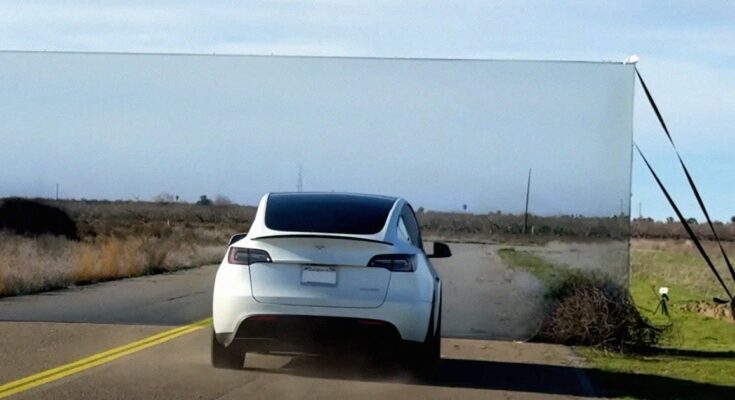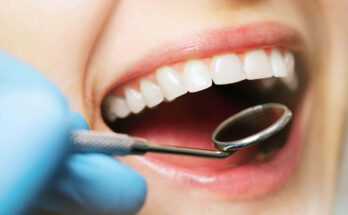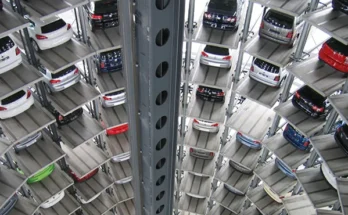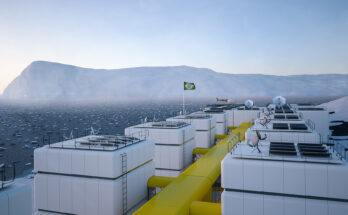Call it the “Road Runner test.” And it shows the weaknesses of Tesla’s camera-only approach to autonomous driving.
Tesla’s approach to autonomous driving has always been a subject of debate. Unlike competitors who use a combination of sensors—including radar and lidar—Tesla relies solely on cameras and artificial intelligence. CEO Elon Musk has repeatedly defended this method, arguing that it mirrors human vision and will ultimately lead to fully autonomous vehicles. However, a recent video by YouTuber and engineer Mark Rober challenges this assumption, highlighting significant flaws in Tesla’s Autopilot system.

The Looney Tunes Experiment
Rober, a former NASA engineer and founder of CrunchLabs, devised a test reminiscent of a classic Looney Tunes gag. He wanted to see if a Tesla on Autopilot could be tricked into driving into a painted fake tunnel—just like Wile E. Coyote often does when chasing the Road Runner. Unlike the cartoon, Tesla hasn’t yet figured out how to magically speed through an illusion. Instead, in Rober’s test, the car drives straight into the wall without slowing down.

For comparison, Rober also tested a Lexus SUV equipped with Luminar’s lidar-based self-driving system. The Lexus detected the fake tunnel as an obstacle and stopped safely. The Tesla, on the other hand, failed to recognize the deception and collided with the barrier. “For the first time in history, I can definitively say that Tesla’s optical camera system would absolutely smash through a fake wall without even a slight tap on the brakes,” Rober remarked.
To further illustrate the difference, Rober used visualization tools to compare how the two vehicles “see” the world. The lidar-equipped Lexus generated a precise 3D map of its surroundings, allowing it to identify obstacles with accuracy. Meanwhile, Tesla’s camera-based system relied on interpreting 2D images, which may struggle in situations with poor lighting, complex patterns, or optical illusions.
A Closer Look at the Test’s Validity
While the test appears to expose a major flaw in Tesla’s self-driving technology, The Verge pointed out several potential issues with Rober’s methodology. Firstly, there were moments where Autopilot may not have been activated, raising questions about the accuracy of the demonstration. Secondly, the use of multiple takes could have influenced the outcome. Finally, Luminar, the company behind the lidar technology used in the Lexus, promoted the video, which raises concerns about bias.
Additionally, Tesla’s self-driving software relies on neural networks that learn from vast amounts of driving data. Some experts argue that while a single test like Rober’s can highlight an extreme case, it may not reflect everyday driving conditions. However, critics counter that the test is a strong example of why relying only on cameras without additional sensors could be dangerous in unpredictable scenarios.
The Broader Implications
Tesla’s Autopilot and Full Self-Driving (FSD) technology have undoubtedly improved over the years, but they are still linked to numerous crashes, including some fatal incidents. Federal and state regulators continue to scrutinize Tesla’s self-driving claims, and many experts argue that a camera-only system will always have limitations. Unlike lidar, which actively maps the environment with precise distance measurements, cameras depend on visual cues, making them more susceptible to deception.
Industry analysts often compare Tesla’s approach to that of other autonomous driving companies such as Waymo and Cruise, both of which use lidar in their fleets. These companies prioritize a sensor-fusion approach, combining cameras, radar, and lidar to create a more comprehensive understanding of their surroundings. While Tesla’s method reduces hardware costs, it may sacrifice safety in certain edge cases, such as Rober’s fake tunnel scenario.
While most drivers won’t encounter fake tunnels in real life, Rober’s test raises an important question: What other critical hazards might Tesla’s system fail to detect? Situations such as dense fog, sudden debris on the road, or unusual shadows could potentially confuse a camera-only system, leading to hazardous outcomes. As Tesla moves toward a future where its cars may not even include steering wheels or pedals, the need for a failproof autonomous system becomes even more crucial.
Tesla’s vision-based approach to autonomy may be innovative, but as the Road Runner test suggests, it might still have a long way to go before it can truly outsmart the obstacles of the real world.




